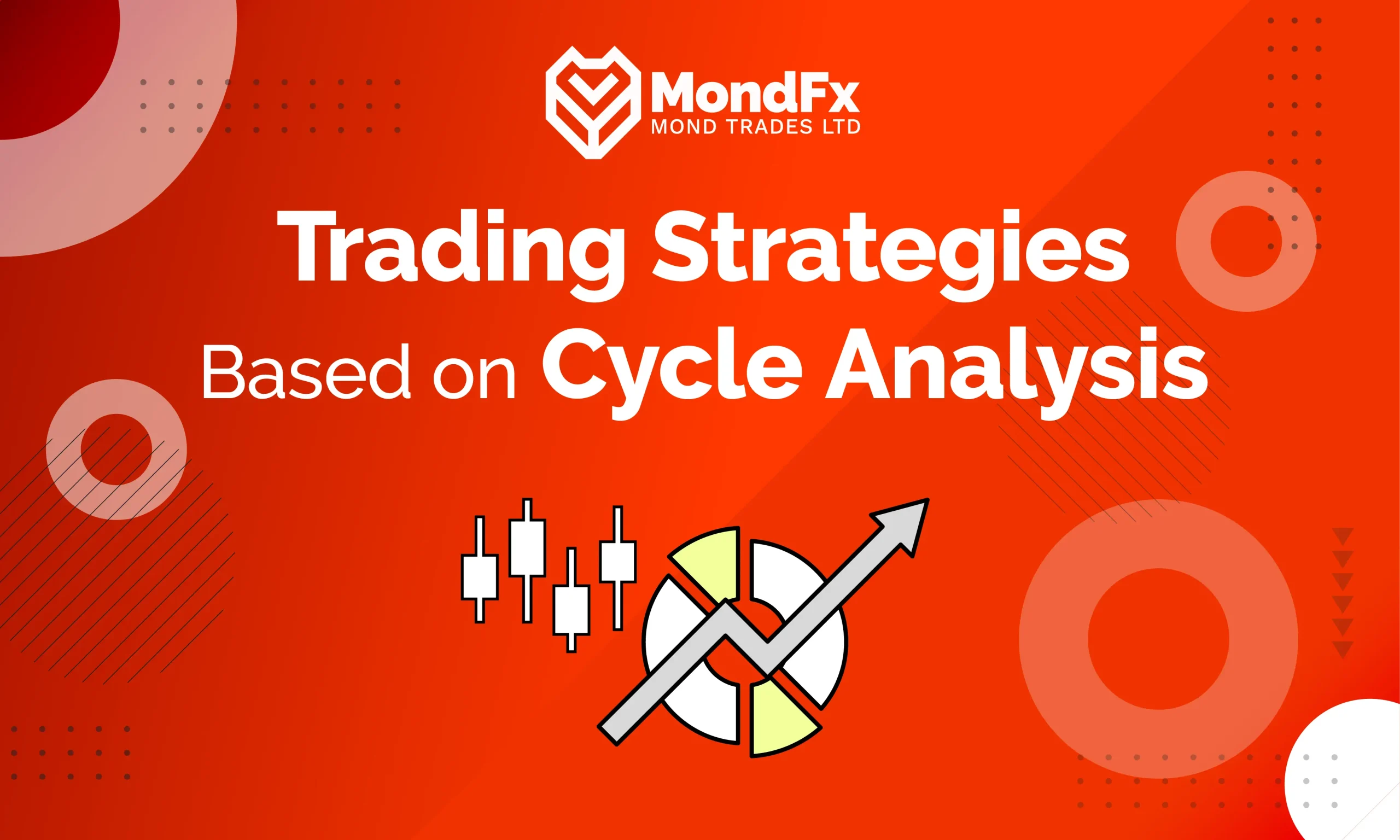Cyclical analysis is one of the key tools in financial trading that helps traders identify recurring patterns and trends in financial markets. This analytical method allows traders to optimize their strategies by gaining a better understanding of price patterns and market fluctuations, enabling them to take advantage of profitable market opportunities. This article examines the principles, tools, and applications of cyclical analysis across various financial markets.
Definition and Importance of Cyclical Analysis
Cyclical analysis is one of the key tools in financial trading that helps traders identify recurring patterns and trends in financial markets. Cycles refer to fluctuations that regularly occur in the prices and trading volumes of financial assets. These fluctuations can be influenced by economic, psychological, and seasonal factors.
The importance of cyclical analysis lies in the ability to understand and exploit these recurring patterns, enabling traders to make better decisions regarding when to buy and sell. This allows them to maximize profits and minimize losses. Market cycles can occur over various time frames, from short-term cycles of a few days to long-term cycles spanning several decades. Recognizing these cycles helps traders better anticipate market changes and optimize their strategies.
Basic Principles of Cyclical Analysis
Cyclical analysis is based on the idea that markets move in repetitive and predictable cycles, reflecting the collective psychology of investors. Each cycle consists of four main phases: accumulation, price increase, distribution, and price decline.
Accumulation Phase: This phase occurs after a market downturn. Investors begin buying assets at lower prices, anticipating a future recovery. Identifying this phase can present excellent investment opportunities.
Price Increase Phase (Uptrend): During this phase, prices steadily rise. This is when most investors enter the market, further driving up prices.
Distribution Phase: In this phase, investors begin selling their assets in anticipation of a potential downturn. Trading volumes are typically high, and prices tend to stabilize before the decline starts.
Price Decline Phase (Downtrend): Eventually, prices start to decrease as investors sell off their assets. This phase can continue until prices reach a level that attracts new buyers, at which point the cycle begins anew.
Understanding these phases allows traders to anticipate market movements and adjust their buying and selling strategies to maximize profits and minimize losses. Cyclical analysis is particularly effective in volatile markets like cryptocurrencies, where recurring patterns can present significant profit opportunities.
Cyclical analysis not only helps traders improve their timing for entering and exiting the market but also aids in risk management. By utilizing various tools and indicators of cyclical analysis, traders can identify the peaks and troughs of cycles and make trading decisions accordingly. This comprehensive approach to market analysis enables traders to operate in financial markets with greater confidence.
Types of Market Cycles
Short-Term, Medium-Term, and Long-Term Cycles
One way to classify market cycles is based on their duration. This classification helps traders and analysts choose appropriate strategies for different time periods.
Short-Term Cycles: These typically last less than a year and are often influenced by daily and weekly market fluctuations. Short-term cycles arise primarily due to rapid changes in supply and demand, economic news, and political events. Day traders and short-term traders usually seek to capitalize on these cycles for quick profits. Tools such as technical indicators and chart patterns help in predicting and managing short-term changes. Medium-Term and Long-Term Cycles
Medium-Term Cycles: These last from one to several years and are influenced by larger economic factors, such as monetary and fiscal policies, interest rates, and changes in economic growth. Medium-term traders and investors typically use these cycles to adjust their investment portfolios and identify suitable market opportunities. Fundamental analysis and the examination of macroeconomic data can be effective in identifying these cycles.
Long-Term Cycles: These can span several decades and are often associated with structural changes in the economy and financial markets. Long-term cycles may arise due to technological, demographic, or political changes. Long-term investors and financial institutions usually seek to identify these cycles for strategic, long-term investments. Analyzing macroeconomic trends and reviewing market history can aid in recognizing these cycles.

Seasonal and Economic Cycles
Seasonal Cycles: Seasonal cycles refer to periodic changes in markets that are typically influenced by the seasons of the year and specific calendar events. For example, the agricultural market is heavily affected by planting and harvesting seasons. Additionally, in financial markets, there may be changes in the final months of the year due to tax and budgetary activities. By understanding these patterns, traders can develop strategies to capitalize on short-term opportunities.
Economic Cycles: Economic cycles refer to changes in the level of economic activity that occur periodically, encompassing phases of expansion, peak, recession, and recovery. These cycles are influenced by factors such as interest rates, monetary and fiscal policies, and labor market conditions. Recognizing these cycles helps investors better manage their timing for entering and exiting the market. For instance, during economic recessions, stock prices may decline, providing better buying opportunities.
Understanding the various types of market cycles enables traders and investors to optimize their strategies and mitigate the risks associated with market fluctuations. By utilizing both technical and fundamental analysis, these cycles can be identified and leveraged for profit. This comprehensive approach to cycle analysis helps traders operate in financial markets with greater confidence and make more informed decisions.
Tools and Indicators for Cyclical Analysis
Cyclical analysis helps traders identify recurring patterns and price fluctuations in markets. There are various tools and indicators available, and here we’ll discuss three of the most important ones: the Detrended Price Oscillator (DPO), Moving Average Convergence Divergence (MACD), and the Relative Strength Index (RSI).
Detrended Price Oscillator (DPO)
The Detrended Price Oscillator (DPO) is a tool designed to eliminate trends from prices and focus on short-term fluctuations. The primary goal of the DPO is to identify price cycles and determine peaks and troughs over specific time periods.
Application of DPO: By removing the influence of the overall trend, the DPO helps traders better recognize short-term price changes and identify optimal entry and exit points for trades.
How to Use: The DPO is typically represented as a line on a chart that oscillates around a zero line. When the DPO crosses above or below the zero line, it can indicate a change in price direction.
Moving Average Convergence Divergence (MACD)
The Moving Average Convergence Divergence (MACD) is one of the most popular technical analysis tools used to identify changes in strength, direction, momentum, and duration of a trend.
Components of MACD: This indicator consists of two lines: the MACD line (the difference between two exponential moving averages) and the signal line (the exponential moving average of the MACD line). A histogram is also used to display the difference between these two lines.
Application of MACD: The MACD can be used to identify the strengths and weaknesses of a trend, as well as potential changes in its direction. The crossover of the MACD line with the signal line can serve as a signal for buying or selling.
How to Use: When the MACD line rises above the signal line, it may indicate a buying opportunity. Conversely, when the MACD line falls below the signal line, it may signal a selling opportunity.
Relative Strength Index (RSI)
The Relative Strength Index (RSI) is a tool that measures the speed and change of price movements, helping traders identify overbought or oversold conditions.
RSI Range: This indicator oscillates between 0 and 100. Values above 70 indicate overbought conditions, while values below 30 suggest oversold conditions.
Application of RSI: The RSI can be used to identify potential price reversal points and to confirm trends. It assists traders in determining the timing of their buying and selling decisions based on market conditions.
By analyzing the RSI, traders can gain insights into market momentum and adjust their strategies accordingly.
How to Use RSI
For example, when the RSI reaches above 70, it may indicate that the price is likely to decline soon. Conversely, when the RSI drops below 30, it may suggest that the price is about to rise.
Using tools and indicators for cyclical analysis, such as the DPO, MACD, and RSI, helps traders gain a better understanding of market patterns and fluctuations, allowing them to make trading decisions based on more accurate data. These indicators provide insights into trends, reversal points, and overbought or oversold conditions, enabling traders to optimize their strategies and reduce trading risks.
Trading Strategies Based on Cyclical Analysis
Cyclical analysis enables traders to identify recurring patterns in the market, allowing them to develop effective strategies for timing their trades. This method is particularly useful for pinpointing entry and exit points and aligning trades with prevailing market trends.
Identifying Entry and Exit Points Using Cyclical Analysis
One of the most important applications of cyclical analysis is identifying optimal points for entering and exiting trades. A precise understanding of these points can help traders maximize their profits and minimize their risks.
Identifying Cycles: Traders can use tools like the Detrended Price Oscillator (DPO), Moving Average Convergence Divergence (MACD), and Relative Strength Index (RSI) to identify price cycles. These tools assist in determining price peaks and troughs, where trend changes are likely to occur.
Entering Trades: When a cycle is in the accumulation or uptrend phase and indicators are moving upward, it may be an appropriate time to enter a trade. These points are typically confirmed by increasing trading volume and trend strength.
Exiting Trades: Conversely, when the cycle enters the distribution or downtrend phase and indicators are trending downward, it may be a suitable time to exit a trade. At these points, a decline in trading volume and weakness in the trend are usually observed.
Aligning Trades with Dominant Trends
Aligning trades with the dominant market trends can help traders operate with greater confidence and capitalize on significant market movements.
Identifying the Primary Trend: Traders should first identify the primary market trend using moving averages and long-term chart analysis. This allows them to determine whether the market is currently in an uptrend or downtrend.
Riding the Trend: After identifying the prevailing trend, traders should adopt strategies that align with this trend. For example, in an uptrend, focusing on buying during pullbacks, and in a downtrend, concentrating on selling during rallies can be profitable.
Confirming Trends with Indicators: Indicators such as MACD and RSI can be used to confirm dominant trends and identify strengths and weaknesses in the market. These indicators help traders recognize potential changes in trend and update their strategies accordingly.
Risk Management
Aligning with dominant trends also helps traders better manage their risks. By following the trend, traders can avoid sudden movements and unexpected reversals, allowing for more precise trading decisions.
Trading strategies based on cyclical analysis enable traders to make better decisions by gaining a clearer understanding of entry and exit points while aligning with prevailing trends. These strategies, utilizing technical analysis tools such as DPO, MACD, and RSI, assist traders in identifying market patterns and fluctuations and optimizing their strategies. This approach allows traders to increase their profits while reducing trading risks, dynamically responding to market changes.
Cyclical Analysis in Different Markets
Cyclical analysis helps traders identify recurring patterns and price fluctuations across various markets. This analysis is particularly useful in the forex, stock, and cryptocurrency markets.
Cyclical Analysis in the Forex Market
The forex market is one of the most dynamic financial markets, influenced by various factors such as interest rates, monetary policies, and economic events. Cyclical analysis in this market assists traders in identifying recurring patterns in currency exchange rates. By understanding these cycles, traders can better time their entries and exits, enhancing their potential for profit.
Influential Factors
Interest rates and the economic policies of countries significantly impact price cycles. For instance, changes in interest rates can lead to the strengthening or weakening of a currency.
Use of Indicators
Traders utilize indicators such as MACD and RSI to identify entry and exit points and detect prevailing trends. These indicators help traders forecast potential changes in currency exchange rates.
Aligning with Economic Cycles
Understanding economic cycles can assist traders in identifying the best times to buy or sell currencies. For example, during periods of economic growth, the currency of the respective country may strengthen.
Cyclical Analysis in the Stock Market
The stock market experiences significant volatility due to influences from economic, political, and psychological factors. Cyclical analysis in this market aids in identifying price patterns as well as peaks and troughs.
Economic Cycles and Sectors
Stocks of companies are affected by economic cycles. For instance, during economic downturns, certain sectors of the market may perform better than others.

Analytical Tools
Traders use tools such as moving averages and technical indicators to identify trends and reversal points. These tools help determine the optimal timing for buying or selling, enhancing traders’ ability to navigate market fluctuations effectively.
Cyclical Analysis in Cryptocurrencies
The cryptocurrency market, characterized by extreme volatility and a lack of clear regulations, poses significant challenges for cyclical analysis. Nonetheless, cyclical analysis can aid in identifying price patterns.
High Volatility
Cryptocurrencies offer numerous short-term and long-term trading opportunities due to their high volatility. Cyclical analysis helps traders identify these opportunities effectively.
Influential Factors
News and events related to blockchain technology and cryptocurrencies can have substantial impacts on price cycles. Traders need to pay close attention to these factors to make informed decisions and adapt their strategies accordingly.
Use of Advanced Indicators
In the cryptocurrency market, indicators such as MACD and RSI can help identify entry and exit points, as well as detect bullish and bearish trends.
Cyclical analysis across various markets enables traders to more accurately identify trading opportunities. Each market has its own unique characteristics and challenges, but by utilizing the right tools and indicators, traders can gain a better understanding of existing patterns and fluctuations. This analysis assists traders in optimizing their strategies and operating with greater confidence in financial markets.
Utilizing Cyclical Analysis in Algorithmic Trading
Incorporating cyclical analysis into algorithmic trading allows traders to analyze and execute trades with greater precision and efficiency. This approach combines the power of cyclical analysis with the speed and accuracy of algorithms.
Advantages of Automated Trading Based on Cyclical Analysis
Increased Accuracy and Speed: Algorithms can rapidly analyze market data and identify cyclical patterns. This enables traders to enter trades more timely and with higher accuracy.
Reduction of Human Error: The use of algorithms minimizes errors caused by emotional decision-making. As a result, trades are executed based on actual data and analyses rather than subjective judgments.
Better Risk Management
Algorithms can automatically monitor market conditions and swiftly adjust trading strategies as needed. This capability contributes to risk reduction.
Timely Execution of Trades
By accurately identifying entry and exit points, algorithms can execute trades at optimal times, potentially leading to increased profits.
Leveraging Big Data
Algorithms are capable of processing large volumes of data and identifying more complex patterns compared to manual analysis. This enables traders to uncover insights that may not be apparent through traditional methods, enhancing their overall trading strategies.
Tools and Software for Cyclical Analysis
Advanced Trading Platforms: Many trading platforms, such as MetaTrader and NinjaTrader, offer tools for cyclical analysis. These platforms enable users to utilize various technical indicators to identify market cycles.
Technical Analysis Software: Software like Amibroker and TradingView provides extensive capabilities for analyzing market cycles. These tools allow traders to design and test their trading strategies based on cyclical analyses.
Programming Libraries: Programming languages like Python and R offer numerous libraries for analyzing financial data and identifying price cycles. Traders can use these libraries to develop custom algorithms tailored to their specific needs.
Trading Bots: Trading bots programmed based on cyclical analysis can execute trades automatically. These bots react quickly to market changes by leveraging real-time market data and technical analysis, enhancing trading efficiency.
Machine Learning Tools
The use of machine learning in cyclical analysis helps identify more complex patterns. These tools can analyze historical data to provide accurate predictions about future market trends.
Incorporating cyclical analysis into algorithmic trading enables traders to analyze the market with greater precision and efficiency, optimizing their trading strategies. By leveraging advanced tools and software, traders can achieve more accurate identification of cyclical patterns, leading to more successful trades. This combination of cyclical analysis and algorithmic trading allows traders to operate in financial markets with greater confidence and achieve better outcomes.
Common Mistakes in Interpreting Cycles
Cyclical analysis of markets can be highly beneficial, but misunderstandings and common mistakes can lead to poor decision-making. In this section, we will discuss two prevalent mistakes in interpreting cycles: biased and subjective interpretations, and neglecting proper historical analysis.

Biased and Subjective Interpretations
One of the biggest challenges in cyclical analysis is cognitive biases. These biases can impact analysis and decision-making, leading traders toward incorrect conclusions.
Selection of Desired Data: Traders may unconsciously choose data that only confirms their pre-existing assumptions. This can result in overlooking important signals and misinterpreting cycles. Over-Interpretation: Sometimes, traders may pay excessive attention to small data points and patterns, leading to incorrect conclusions. This over-interpretation can result in hasty and erroneous decisions.
Emotional Influences: Emotions such as fear and greed can distort traders’ perspectives, causing them to perceive patterns that do not actually exist.
To counter these biases, traders should continuously evaluate their strategies and utilize quantitative tools and objective data for analysis. Additionally, employing systematic and automated approaches can effectively reduce the impact of cognitive biases.
Ignoring Sufficient Data: One common mistake is using insufficient or limited data for cycle analysis. This can lead to misidentifying cyclical patterns.
Lack of Long-Term Analysis: Some traders may focus solely on short-term data and neglect long-term analysis. This oversight can result in missing significant long-term trends and making poor decisions.
To avoid these pitfalls, traders should ensure they are utilizing comprehensive historical data and considering both short-term and long-term trends in their analyses. A balanced approach can enhance the accuracy of their interpretations and improve decision-making.
Ignoring Structural Changes: Markets can undergo structural changes due to various factors. Overlooking these changes may result in cyclical analysis based on past conditions that are no longer relevant.
To avoid these mistakes, traders should conduct comprehensive analyses of historical data while considering structural changes in the market. Utilizing advanced data analysis methods and specialized software can enhance the accuracy of their analyses and lead to more informed decision-making.Common mistakes in interpreting cycles can negatively impact trading decisions. Subjective and biased interpretations, as well as a lack of attention to proper historical analysis, are among these errors. By using objective and systematic methods, and leveraging comprehensive data and precise analysis, traders can avoid these mistakes and conduct more accurate analyses. These measures help them operate with greater confidence in financial markets and achieve better results.
Conclusion and Recommendations
Summary of the Importance of Cyclical Analysis
Cyclical analysis is a powerful tool for traders that helps identify recurring patterns and market fluctuations. This analysis enables traders to make better decisions and optimize their strategies by providing a clearer understanding of market timing. By using cyclical analysis, entry and exit points can be determined more accurately, allowing traders to take advantage of sudden market changes.
Market cycles are influenced by economic and psychological factors, and identifying them can help reduce risk and increase the profitability of trades. This method is particularly useful in volatile and complex markets such as cryptocurrencies and Forex, where rapid changes can create significant investment opportunities.
Key Points for Improving Trading Strategies
Utilize Diverse Technical Tools: Leveraging indicators such as MACD, RSI, and DPO can enhance the identification of market cycles. These tools enable traders to more accurately pinpoint trends and turning points in the market.
Avoid Cognitive Biases: Traders should rely on objective data and quantitative analyses, steering clear of personal and emotional interpretations. Implementing automated trading systems can help mitigate the effects of cognitive biases.
Conduct Comprehensive Historical Analysis: Examining historical data and understanding long-term trends can improve the accuracy of cyclical analysis. Traders should consider structural changes in the market and macroeconomic factors.
Effective Risk Management
Establish Appropriate Stop-Loss and Take-Profit Levels: Setting suitable levels for stop-loss and take-profit, along with implementing risk management strategies, can help preserve capital and minimize losses. It is also important to align trading strategies with varying market conditions.
Continuous Education and Updating Skills: Financial markets are rapidly changing, and traders must continuously update their knowledge and skills. Participating in training courses and studying reputable resources can enhance analytical capabilities.
Cyclical analysis, as one of the key tools in trading, enables traders to more accurately identify patterns and market fluctuations. By following the above recommendations, trading strategies can be improved, leading to better outcomes in financial markets. This analysis helps traders make more confident decisions and effectively capitalize on market opportunities.
Final Thoughts
Cyclical analysis is a powerful tool for traders that helps identify repetitive patterns and market fluctuations. This method allows traders to improve their timing and optimize strategies, leading to better decision-making and increased profits. Key aspects for enhancing trading strategies based on cyclical analysis include utilizing diverse technical tools, avoiding cognitive biases, conducting comprehensive historical analysis, effective risk management, and ongoing education. By leveraging this approach, traders can engage in financial markets with greater confidence and achieve better results.



